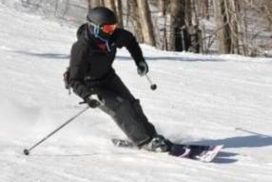ELBOW INJURIES
What is the Elbow?
Your elbow is considered to be a hinge joint—meaning it allows your arm to extend and flex in a hinge-like motion (picture a capital “L” and then picture a straight line), and a pivot joint, which means in conjunction with your forearm your elbow enables you to be able to position your hand so your palm is up (pronate) or your palm is facing down (supinate). Three bones come together to form the elbow: the humerus (upper arm bone) and the ulna and the radius (these two bones form your forearm).
- Other structural features of your elbow include:
- Olecranon
- Medial Epicondyle
- Lateral Epicondilitis
- UCL
What are the Treatment Options for Elbow Injuries?
Non-Surgical Treatment
The first step toward recovery after an elbow injury is to immediately stop playing sports and give your joint the rest it needs. When you make the smart decision early, and your injury is not severe, it is possible for these simpler forms of treatment to have a lasting and effective impact on your recovery:
- Ice therapy can be effective in reducing swelling around the joint
- NSAIDs (Nonsteroidal anti-inflammatory drug )can be used to help fight inflammation, swelling, pain, and general discomfort
- Physical therapy sessions can lead to a successful recovery of your elbow’s range of motion and functional strength
Surgical Treatments
What is elbow tendinopathy?
Elbow tendinopathy is a term used to describe inflammation and/or tendon injury to the medial (inside) or lateral (outside) aspect of the elbow. Tendons connect muscle to bone. In this case, it is the muscles in the forearm, connecting to the epicondyles of the elbow. It is typically divided into medial epicondylitis or lateral epicondylitis. Pain located medially on the elbow is commonly referred to as golfer’s elbow, or medial epicondylitis. While pain located laterally on the elbow is commonly referred to as tennis elbow, or lateral epicondylitis.
What causes elbow tendinopathy?
Elbow tendinopathy is considered an overuse injury, meaning repetitive stress to the same area over time causes the tendon to become inflamed and injured resulting in multiple micro tears to the tendon.
– Medial Epicondylitis is an overuse injury to the common flexor tendon and is caused by repetitive movements that cause the wrist to flex up.
– Lateral Epicondylitis is an overuse injury to the common extensor tendon and is caused by repetitive movements that cause the wrist to extend down.
What are common symptoms of elbow tendinopathy?
Common symptoms include a constant ache medially or laterally to the elbow. It can also be characterized as intermittent sharp pain with the aggregating activity, such as flexing or extending the wrist. Pain may radiate down the forearm. It can come on suddenly, or progressively worsen over time.
What is the distal biceps tendon?
The biceps muscle runs from the shoulder down to the elbow. Muscle is connected to bone by tendon. The distal insertion, or lower connecting point, of the biceps tendon is located on the radius. The radius is one of the two forearm bones.
What does it do?
The distal biceps provides motion at the elbow: extension, flexion, pronation, and supination.
Why does it need surgery?
When the distal biceps tendon is torn or ruptured, it will not heal on its own. Surgery is required to pin the distal biceps tendon back down to its insertion on the radius.
What does this surgery entail?
This surgery is an open procedure. The surgeon will make a small incision, about 1-2 inches very close to the elbow. The torn distal biceps tendon will be identified and debrided to make the tendon as pristine as possible. Then, the tendon will be fixated onto the radius bone.
Will my arm look the same after surgery and will I be able to regain full strength?
Yes, the doctor will make sure the tension on the biceps is anatomically correct and will allow you to have symmetry and full strength after surgery once the muscle bulk is restored with physical therapy. Moving the biceps tendon down, out of the joint will not cause you permanent weakness.
How long will I stay in the hospital?
This surgery is typically done as ambulatory surgery, meaning you will go home the same day of surgery.
What are the possible risks and complications of surgery?
As with any surgery there is a risk of nerve damage, bleeding, and postoperative infection, however, these are very rare. Specific risks and complications include but aren’t limited to re-tear, post-op stiffness, and continued pain.
When can I drive?
You may not drive while taking pain medication or while wearing a sling/brace.
When can I start to run or return to sports?
Running does produce stress on the joint, and will be detrimental to the healing process. You can ride a recumbent bike a couple weeks after surgery and after a few months you can progress to Elliptical machine without arm motions. You should avoid running for the first 3 months. Return to sport will be based on your progress with physical therapy and sport of choice. Typically, a 6 month period of rehabilitation is required for full function to return. Working hard in physical therapy, and strictly following the exercise program may shorten this process. Please see Your Surgery and Physical Therapy for more information on this condition.
What is the distal triceps tendon?
The triceps muscle runs from the shoulder down to the elbow. Muscle is connected to bone by tendon. The distal insertion, or lower connecting point, of the biceps tendon is located on the olecranon, part of the elbow.
What does it do?
The tricpes provides motion at the elbow, particularly extension.
Why does it need surgery?
When the distal triceps tendon is torn or ruptured, it will not heal on its own. Surgery is required to pin the distal triceps tendon back down to its insertion on the olecranon.
What does this surgery entail?
This surgery is an open procedure. The surgeon will make a small incision, about 1-2 inches on the posterior (back) aspect of the elbow. The torn distal triceps tendon will be identified and debrided to make the tendon as pristine as possible. Then, the tendon will be fixated onto the olecranon.
Will my arm look the same after surgery and will I be able to regain full strength?
Yes, the doctor will make sure the tension on the biceps is anatomically correct and will allow you to have symmetry and full strength after surgery once the muscle bulk is restored with physical therapy. Moving the biceps tendon down, out of the joint will not cause you permanent weakness.
How long will I stay in the hospital?
This surgery is typically done as ambulatory surgery, meaning you will go home the same day of surgery.
What are the possible risks and complications of surgery?
As with any surgery there is a risk of nerve damage, bleeding, and postoperative infection, however, these are very rare. Specific risks and complications include but aren’t limited to re-tear, post-op stiffness, and continued pain.
When can I drive?
You may not drive while taking pain medication or while wearing a sling/brace.
When can I start to run or return to sports?
Running does produce stress on the joint, and will be detrimental to the healing process. You can ride a recumbent bike a couple weeks after surgery and after a few months you can progress to Elliptical machine without arm motions. You should avoid running for the first 3 months. Return to sport will be based on your progress with physical therapy and sport of choice. Typically, a 6 month period of rehabilitation is required for full function to return. Working hard in physical therapy, and strictly following the exercise program may shorten this process










